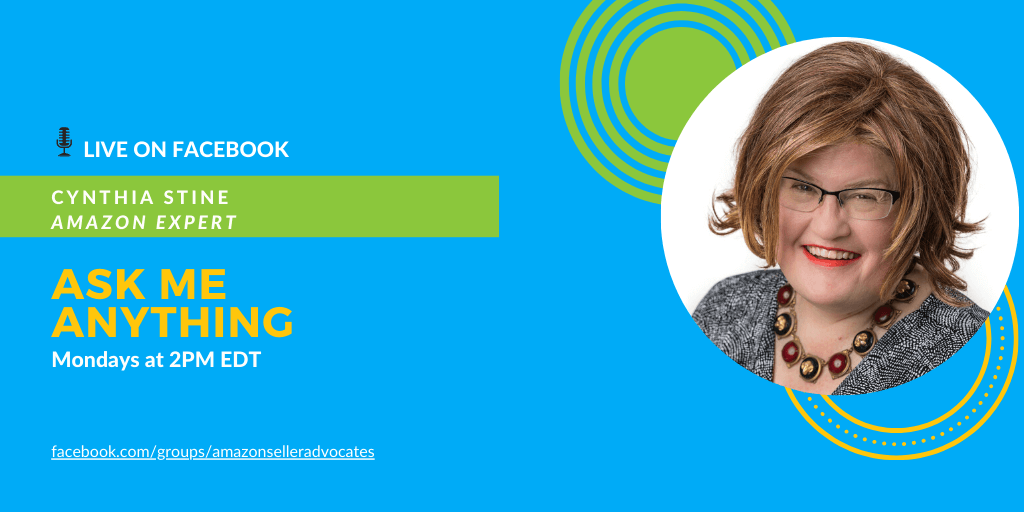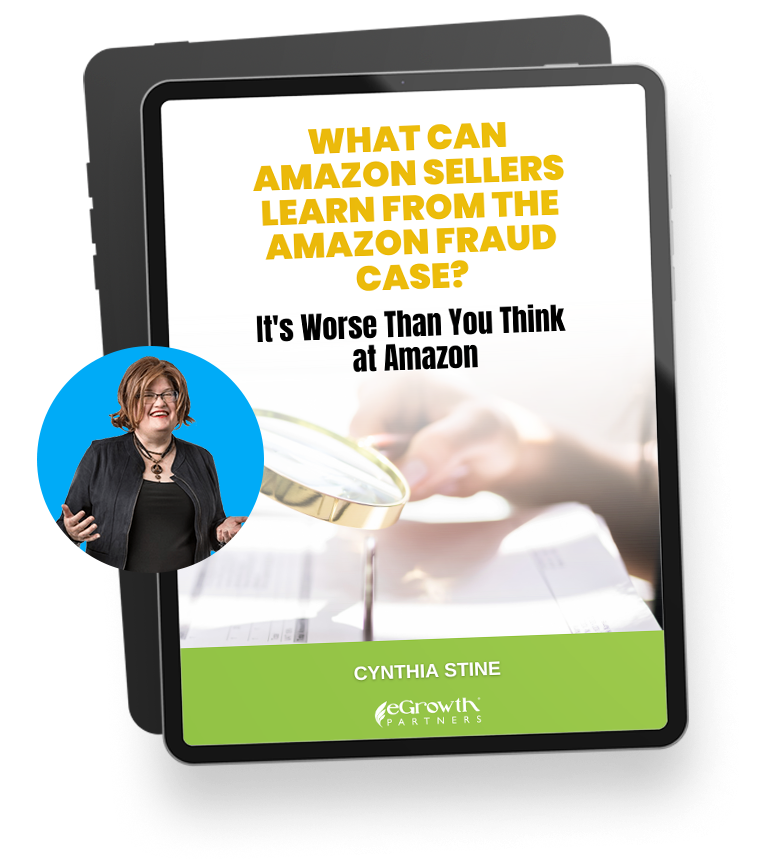Yes, that title IS a joke as I’ve never charged for my blog, but it relates to what’s happening at Amazon right now.
“Free” Costs Amazon Sellers A Bundle
In another algorithm bot cluster, Amazon has removed jillions of listings from its platform that have the word “Free” or “Gift” in the titles. Here’s a partial list of the trouble keywords. See if you can guess why this is a cluster:
- Wrinkle-free
- Gluten-free
- Grain-free
- Scent-free
- Fat-free
- Sugar-free
- Cruelty-free
- Brand style names like “Nike Free”
- Slogans like “Live Free or Die”
- Gift Basket
The notice that comes with the takedowns states, “The Title has prohibited phrases which is against Amazon policy.”
Obviously, this is a mistake. Amazon is trying to get rid of things like “Widget A + FREE eBook!” and nonsense like that. Those uses of the word “free” are against TOS, and it looks like Amazon is going to enforce now.
Some sellers are trying to fight it. They’ve posted on Facebook that the catalog team is equally frustrated and suggesting we complain loudly to Amazon.
While we wait for Amazon to realize it has a LOT of false positives, sellers can also try changing their titles to:
- Wrinkle-less
- No Gluten
- No Grain
- Scentless
- Non-Fat
- Sugarless
- Non-Cruel
It won’t help Nike, but I imagine they have more pull than we do with Amazon. I’m confident people selling items with “Live Free or Die” will be able to successfully fight their case. I just don’t know how long it will take.
Because this is new, we also don’t know yet if having “Sugar-free” in the back-end keywords is OK or not.
Update to Amazon’s Fair Pricing Policy Takedowns
Sellers are having varying degrees of success getting their listings/accounts back after a takedown for Fair Pricing Policy. Most of these are easily resolved by showing Amazon you understand their policy and that you’ve scoured your inventory for all possible issues and fixed them. In most cases, our clients are NOT price gouging. They are experiencing supply chain cost increases, and their prices are in line with other providers on and off Amazon.
Alternatively, the problem is their price increases are higher than the amount allowed by strict states like California and Florida. While I have not read the rules in all the states that have anti-price gouging statutes, the ones I’ve read have an allowance for the situation where costs of acquisition have gone up.
At heart, price gouging is about taking advantage of people who are struggling from a disaster. The states want to make sure that vital goods from water to gasoline are available to everyone in times of crisis. They are not going to prosecute someone who can show that their price adjustments are reasonable and because of their cost of acquisition.
OK, so what’s “reasonable?” There’s the rub. It is highly subjective. California put a percentage on it. Many states don’t limit themselves that way. It’s like pornography. They know it when they see it. Many states rely on consumer complaints to direct them to the offenders.
Why am I talking about the states? Because Amazon is listening to the states and cooperating with them in lawsuits against sellers. For that reason, if no other, I suggest following the laws of the states of California, New York, Illinois, and Florida. Don’t worry about Texas–they are one of the states who knows it when they see it. Your best bet is to follow the guidelines of a strict state and hope no one is complaining.
If you follow the guidelines of the stricter states – not coincidentally the ones with high population density where you are surely selling your goods – you can help prevent these takedowns from happening. It is not sure-fire, but it helps.
Start your research on (California), (Florida), (New York), (Illinois), Anti-Pricing Gouging Laws, and Price Gouging Laws by State.
By the way, if you are thinking all these takedowns are a cynical CYA on Amazon’s part to protect itself from legal action by the states for not doing enough…then you think like me. There’s more than a whiff of CYA to these, which is why – in most cases we work on – Amazon is allowing sellers back on once they demonstrate an understanding of Amazon’s Fair Pricing Policy and take action in their accounts.
They are now taking down sellers who’ve only raised prices a few dollars, not the bad actors who were selling hand sanitizer for $70 a bottle. Those guys are already gone and are facing legal action.
If you’ve avoided a Fair Pricing Policy takedown so far, lucky you, but don’t rest on your laurels. The algorithm is chugging away with new cases coming to our firm every day.
Cynthia Stine, Amazon Expert Tweet
Here’s what I suggest to help you stay under the radar:
- Review all your inventory specifically looking for items that may be potentially considered “essential.” Some of our clients had no idea they were selling essential items because they weren’t obvious, like soap or hand sanitizer. See my previous blog on this topic for a list of potential items.
- Adjust your repricer. Some of our clients got in trouble when they were the only seller on an item because their repricer automatically priced them higher. You cannot treat essential items the same way you treat other items in your inventory.
- Read what the big states are saying about anti-price gouging, so you understand how the Amazon algorithm is working and why.
- Apply to sell on Amazon Business. If you are selling essential items that could be used by first responders, like masks or hand sanitizer, see if you can get into Amazon’s special PPE program for first responders. Amazon is waiving all its fees for sales through this new platform and you may be able to make a better profit at a lower price, or at least meet the desired lower price and make a profit; whereas, the .com site is unprofitable.
Concerned Amazon Might Suspend You?
Hot Off the Fair Pricing Presses
The latest move by Amazon on this front is VERY new. They are allowing some sellers to reactivate their product listings without an appeal response.
Here’s the letter some of our clients have received:
Dear Seller,
Based on our records, you may have product listings that were removed due to non-compliance with Amazon’s Marketplace Fair Pricing Policy. When we originally removed your product listings, we shared that you could appeal for listing reactivation through your Account Health Dashboard on Seller Central. We are writing to inform you that we have updated the process for reactivating your product listing(s), and you no longer need to submit an appeal or wait for a decision from a previously submitted appeal to have these products relisted. We have updated the process for reactivating the following ASINs: XXXX
New Process for reactivating your listings:
1. In the Inventory section of Seller Central, select Manage Inventory.
2. Search for the ASIN or offer in question or select Fix Stranded Inventory.
3. Edit the inactive ASIN or offer by updating the product information.
4. Save and finish.
What we don’t know yet is what Amazon wants sellers to do in terms of editing the ASIN. Lower the price? That’s our guess. How much? We don’t know, but we’ll find out over the next few days. If you have been waiting for Amazon to get back to you on an appeal you submitted, it doesn’t hurt to try this.
Does this mean Amazon doesn’t want an appeal anymore? Maybe. They didn’t actually say that. It may be seller-specific or takedown-type specific. For certain types of Fair Pricing Policy violations, they may feel they don’t need one. A warning is enough. The infraction was very minor, or this may only be the case for sellers who otherwise have clean records with Amazon.
How do you know what your standing is with Amazon? You don’t. They don’t share. However, if you’ve had policy infractions in the past or a previous suspension, you are not in the top tier. If it is a long time in the past, like over a year, then you are in better standing because you’ve shown you’ve learned and made changes to your business, but I still can’t tell you exactly what your ranking is.
Why is Amazon taking so long with some appeals and not others? We don’t know. We are generally able to get sellers back within a few days, but then a few just sit and sit. We don’t know why. We’ve seen on Facebook that a lot of sellers are experiencing long wait times, which surprised me. Here’s my educated guess:
- The seller has not adequately demonstrated to Amazon that he/she understands Amazon’s Fair Price Policy
- The seller made no changes to their account that Amazon could see
- The appeal was incomplete and did not include the information Amazon wanted (this is common in the cases where sellers come to us after trying themselves first).
- The seller’s prices were more than a couple of dollars higher than normal. The percentage increase may have been significant even if the actual dollar amounts are low.
- The seller was unable or did not show that their prices were in response to higher acquisition costs. It’s OK to tell Amazon the truth if you can back it up. We love math appeals where we calculate it all out for Amazon (hah). Those work, but obviously that needs to be the reason why your costs went up. If you were just matching other sellers and your cost of acquisition didn’t go up, focus on an earnest “my bad” appeal instead.
- The seller has other problems in their account or recent troubles, or even past notices of high prices and Amazon is punishing them by making them wait. This is sheer speculation on my part, but they’ve done it before where they will put a note on a seller’s account that they are not allowed to be reinstated until a certain date because they are repeat offenders.
- Alternatively, it’s not actually price gouging. We have a client right now who found out after calling Account Health multiple times that her account was marked as selling restricted products, not violation of Amazon’s Fair Pricing Policy.
For our clients who’ve been waiting a long time, we are trying multiple tactics to get someone at Amazon to read their appeals and respond, and those are the issues we consider when looking at their accounts.
I’m hopeful about Amazon’s new policy for reinstatement and hope they will extend it to all sellers with Fair Pricing Policy takedowns soon. It will reduce our business, but I’m confident Amazon will soon have new reasons for sellers to contact us. They are nothing if not prolific in their constant “improvements” to the platform.
Amazon Pushes for Federal Fair Pricing/Anti-Price Gouging Law
I will probably sound cynical again, but the impetus behind Amazon’s recent open letter to Congress seems to have a fair amount of self-interest attached. Here’s some quick excerpts:
“…to keep pace with bad actors and protect consumers, we need a strong federal anti-price gouging law. As of now, price gouging is prohibited during times of crisis in about two-thirds of the United States. The disparate standards among states present a significant challenge for retailers working to assist law enforcement, protect consumers, and comply with the law. For example, some states define price gouging as a price ranging from 10% to 25% above average sales prices; others simply prohibit “unconscionably excessive” price increases; some have no explicit laws against price gouging, but seek to enforce price gouging under general consumer protection statutes; and many, but not all, states permit price increases that reflect increased costs of goods and supply chain costs.”
“…a federal price gouging law would ensure that there are no gaps in protection for consumers. This would also help retailers like Amazon more effectively prevent bad actors and ensure fair prices.” (emphasis mine)
Amazon goes on to lay out its suggested framework for what this federal law would look like and how it would be enforced. I think if Congress were to pass such a law, it would be helpful to sellers too because we would have clear guidelines as to what price gouging is, and Amazon’s “false positive” takedowns would be reduced.
For Amazon it would much easier for them to enforce on us with clear guidelines as well. That’s the self-interest part. They want clear rules, and they don’t want to have to negotiate with 50 state attorney general’s offices. They also don’t want to have to eat price increases. In this we are all aligned.
One thing that caught my eye is that Amazon wants:
“…pricing prohibitions should apply to the party who actually sets the price of a product.”
That would be us. While that’s not unreasonable, you know they really, really want this to get unhappy consumers off their backs and for reporters to stop talking about price gouging on Amazon as if it is Amazon’s fault.
They hired the letter author from the FTC which was a strategic move on their part. In short, it looks like we may have legal definition and federal enforcement on price gouging in the future, and Amazon will have its hero moment when it passes. It will probably be good for honest sellers.
However, as with all good ideas put forth to Congress, I’m nervous about unintended consequences and how the final law will come out. Just look at the recent SBA cash injections to businesses if you want a recent example of congressional sausage making and unintended consequences. In today’s political climate, having Amazon actively involved may derail or kill the bill as well. President Trump does not like Jeff Bezos. Stay tuned.
Hopeful Signs of Amazon’s Recovery
Some of you may remember I wrote a blog about the signs that would indicate to me that the online seller economy was going to recover and that sellers might have a normal Q4.
Since that time, I’ve been tracking Amazon’s progress. I’ve seen both hopeful and concerning signs. The most concerning are the warehouses and safety of the workers. If Amazon is unable to keep its workers safe, it will have to shut down warehouses, which will impact all of us enormously. The State of Wisconsin threatened Amazon with closure of its Wisconsin campus because of Coronavirus, for example.
The New York Times had an informative article recently about what’s happening, and the steps Amazon has taken to improve worker safety. I know we all hope that they are enough, both for the sake of the workers and for our businesses to continue.
On the hopeful front, I’ve seen several encouraging signs:
- Amazon hired even more workers to help with deliveries and in the warehouses — 175,000 workers in the past couple of months.
- Deliveries are faster. I’m now able to order groceries for same-day or next-day delivery, which is a huge improvement. Hopefully, Dallas is the norm and not the exception. I’m also finding that orders from .com are also getting here faster – within days rather than weeks. Some things have been as fast as next day. Again, I’m assuming/hoping this is now the norm.
- A recent NYT story stated that Amazon is taking steps to get its customers back from Walmart, Target, and others. Over the past few months Amazon went down from approximately 42% of all online sales to 34% in April. Upcoming site sales and competitive steps indicate Amazon is confident that it can handle more business and is on top of its supply chain and distribution networks.
- Jeff Bezos is overseeing Amazon’s day-to-day operations again.
- Amazon re-opened its Affiliates program and re-started its “Today’s Deals” page.
- Amazon is starting to enforce its metrics on June 1 for cancelled orders and late shipments. While this is a bummer for MF (merchant-fulfilled) sellers, it is an indication that Amazon is back and ready to focus on delivery to buyers again.
- Safer warehouses. While it took a long time (in Amazon years) for Amazon to make its warehouses safer, it has taken a lot of steps from infrared cameras that check for fevers, to re-arranging the warehouses so workers can social distance, to providing hand sanitizer stations, masks, etc. These were expensive and time-consuming changes and indicate commitment to me.
- France re-opened its warehouses on May 19. Again, a good sign that Amazon has gotten a handle on workforce safety and good news for sellers into France. France is VERY pro-worker, so I took that news as a good sign that Amazon’s measures are effective and not just lip service.
- Essential supplies are available online again. Toilet paper is hit or miss still, but it’s much better than it was. Flour, yeast, beans, and eggs are back. I’ve seen a lot of progress.
- Prime Day is rumored to be in September. Again, no set date that I know of, but that’s the rumor according to news reports and having Prime Day is a good sign that Amazon is ready to handle Q4. I’m assuming that it won’t be a major cluster. We’ll have to wait and see. Even in normal years there have been problems.
- Amazon is allowing most items into the warehouse. Amazon has restricted a fair number of products that can only be sold by Amazon or must be sold on its new First Responder platform. Otherwise, it is allowing sellers to send their inventory to the warehouse.
Update on Amazon Stealing Data from Sellers
This is not exactly about Amazon stealing data from sellers, but Amazon announced it is making face shields at cost to sell on .com and on the First Responders site. While this is good news for first responders, it signals that prices are going to drop by at least a third for current sellers of face shields on the platform. The company has already started delivering face shields.
Amazon apparently designed these innovative masks in a week, which is impressive.
It brings up the question, did Amazon use individual seller data to create these new face shields? We’ll never know, but now every time Amazon launches a new product you have to wonder. If you missed it earlier, check out my previous blog about Amazon stealing seller data.
Update on Amazon’s New PPE Program for First Responders and Amazon Business
As mentioned above and in a previous blog, Amazon has a new program through its Amazon Business platform that allows approved sellers to sell a wide variety of PPE and essential items to the government, hospitals, and other first responders. This is for brands and high-volume sellers who can keep items in stock. Not everyone will be accepted.
It is now fully operational, so you can check it out for yourself and see the types of items being sold.
One of the advantages for sellers is that Amazon is not taking any fees, nor making a profit off this venture. This allows the seller to offer goods at a low cost and still make margin. No pick and pack, no 15%, nothing.
For sellers who have been unable to sell PPE supplies anywhere online because of platform restrictions, now’s your chance. You can also feel good about it because the sales are going directly to first responders who still need them desperately. The need is only going to increase as the economy opens and cases grow again. The participating buyers are vetted as closely as the sellers, so you know you are helping the right people.
In addition, if you don’t have an Amazon Business account, you may want to investigate it, depending on your inventory. Businesses and governmental/municipal agencies order large volumes of supplies. Amazon Business gives you the opportunity to offer bulk sale prices, and you’d be surprised at the goods businesses need. Beyond the obvious office supplies, businesses buy everything from flowers to food to automotive parts to toilet paper to medical supplies to cell phones and accessories to TVs and TV wall hangers to light bulbs, to name just a few.
We have clients who don’t even sell on .com. All their inventory is sold through Amazon Business. Even if you are not accepted for the First Responders program, Amazon Business may boost your sales of other items.
You can sell your inventory on .com and Amazon Business simultaneously, and Amazon will merge your Business account into your Seller Central. You can switch between them much like you would switch between Canada and the US.
A caveat: Amazon Business is for volume brands, wholesalers, and resellers. It is important to have reliable stock month after month and to be able to sell large quantities at a time. This is NOT an opportunity for arbitrage sellers or liquidators.
As a reminder if you missed it previously, here’s more information on the First Responders program:






